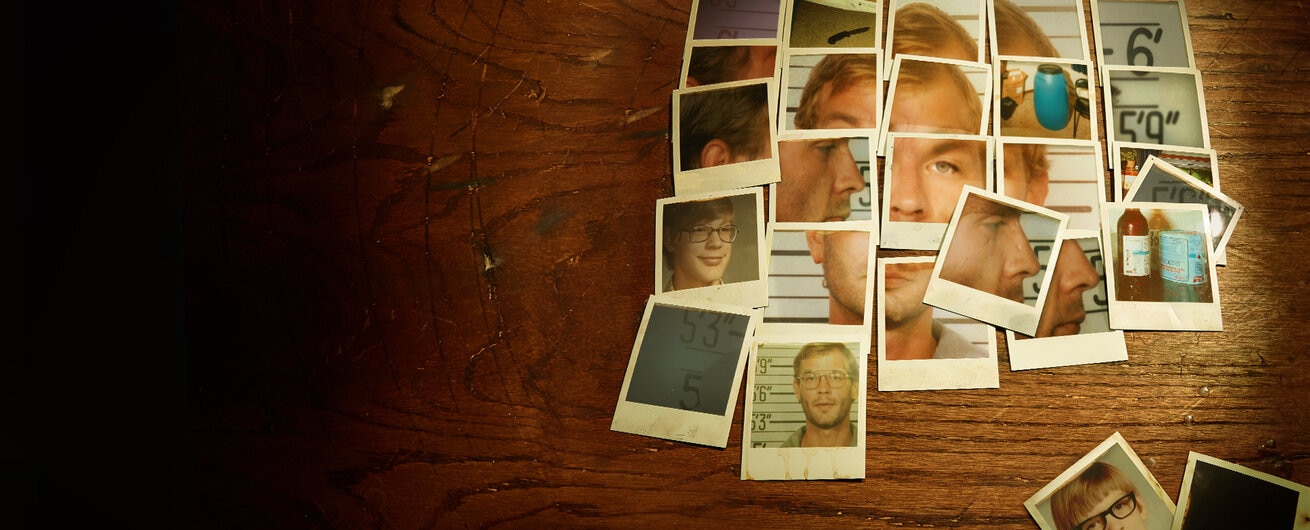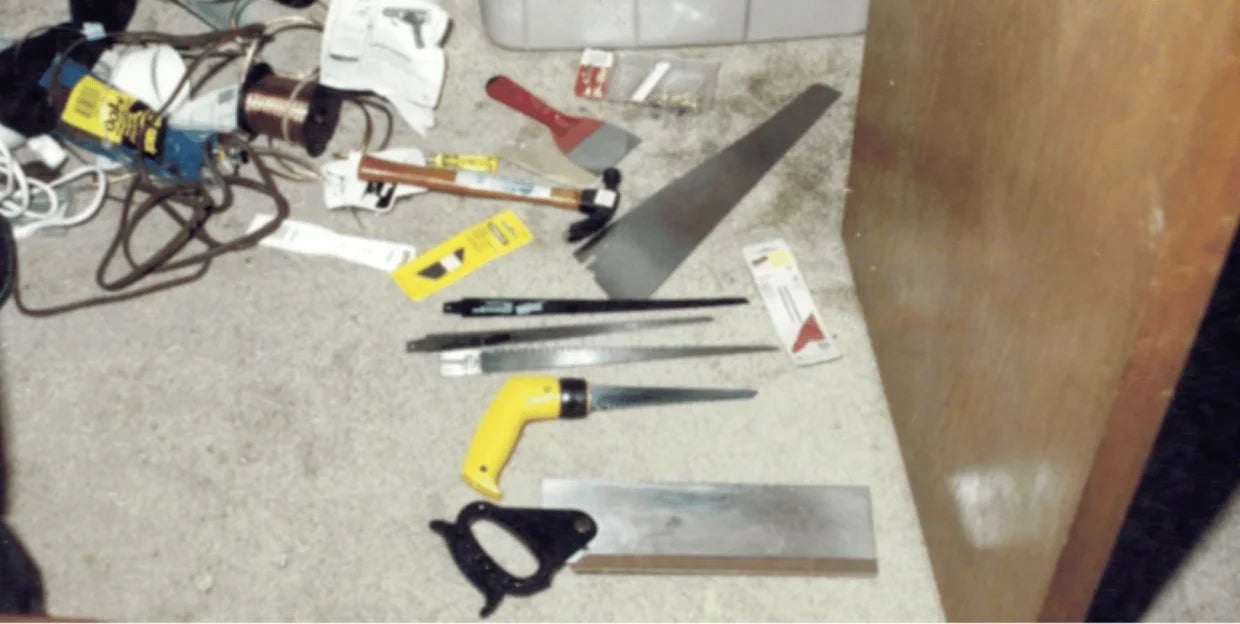Unseen Dahmer: Inside The Crimes & Crime Scene Photos
Could a collection of photographs truly tell the story of unspeakable acts? The crime scene photo, a seemingly innocuous image, often holds within its frame the chilling details of human depravity and the echoes of a life extinguished. The images, often stark and unsettling, force us to confront the grim realities of criminal behavior, leaving an indelible mark on the collective consciousness. They provide an unsettling window into the minds of those who commit the most heinous acts.
The pursuit of understanding crime and the minds of criminals has always fascinated society. From the earliest investigations to the advent of modern forensics, the visual record has played a critical role in piecing together the narratives of violence. Early photographic techniques, though rudimentary by today's standards, captured the essence of scenes that were once only described through witness testimony and police reports. These images, initially used for investigative purposes, eventually seeped into the public sphere, sparking a macabre fascination with the details of crime. The use of crime scene photos, however, comes with considerable ethical weight. The images can be intensely disturbing, and their display raises questions of privacy, exploitation, and the potential for desensitization. They also bring forward questions if such images are necessary to display in public.
The case of Jeffrey Dahmer, a name synonymous with terror, offers a stark illustration of the power and the controversy surrounding crime scene photography. Photos from his Milwaukee apartment, where he committed a series of gruesome murders, reveal the tools of his crimes: saws, power tools, and the chilling remnants of his victims. These images, along with the 74 Polaroid photographs documenting the dismemberment of his victims, became a harrowing testament to the depths of Dahmer's depravity. The scene, as described by the chief medical examiner, resembled "dismantling someones museum," a chilling phrase that captures the calculated nature of his acts.
- Exploring Xvideos Impact On Culture The Digital World Year
- Free Movies Tv Shows Are They Worth The Risk Discover Now
| Category | Details |
|---|---|
| Full Name | Jeffrey Lionel Dahmer |
| Born | May 21, 1960, Milwaukee, Wisconsin, USA |
| Died | November 28, 1994 (aged 34), Columbia Correctional Institution, Portage, Wisconsin |
| Known For | Serial killer and sex offender; committed the murders and dismemberment of 17 men and boys. |
| Crimes | Murder, sexual assault, necrophilia, cannibalism, dismemberment, and the preservation of body parts. |
| Victims | 17 young men and boys |
| Method | Primarily strangulation and drugging; some victims were drugged and then dismembered. |
| Capture and Arrest | July 22, 1991, after a victim escaped and led police to his apartment. |
| Trial and Sentencing | Convicted of 16 counts of murder; sentenced to 957 years in prison. |
| Death | Killed by a fellow inmate in prison. |
| Notable Locations | Milwaukee, Wisconsin (Apartment at 924 N. 25th Street, where most of the murders occurred.) |
| Psychological Profile | Suffered from personality disorders and was diagnosed with borderline personality disorder, schizotypal personality disorder, and a psychotic disorder. |
| Infamy | Dahmer's crimes are among the most infamous and disturbing in American history. |
| Cultural Impact | Subject of numerous books, films, and documentaries, including a Netflix series and a Katy Perry lyric. |
| Reference | Biography.com |
The photographs taken at 924 N. 25th Street, in Milwaukee, became evidence of Dahmer's crimes. They depicted the tools of his trade, as well as the appalling state of the apartment, including barrels of hydrochloric acid used to dissolve bodies, and the chilling discovery of a fridge used for storing skeletons. Authorities also uncovered graphic photos depicting necrophilia and a sketch of an altar he planned to construct. The images, splashed across the media, fueled public horror and fascination, transforming the apartment into a symbol of evil. The site itself would become a focus for the media, with members of the news and many others drawn to the scene.
The history of crime scene photography is rich and complex. Before the internet and the widespread sharing of images, the crime scene photo had a crucial and complicated history. The earliest examples served purely investigative purposes, documenting the scene to aid in reconstruction and evidence gathering. The "first famous crime scene photo" is a reference to the evolution of crime scene photography as a tool. These images served to help the investigators reconstruct the scene, examine the evidence, and give the jury a clear understanding of the events that transpired. However, these images were not widely displayed.
The evolution of crime scene photos, from purely investigative tools to artifacts of public interest, reflects a broader shift in society's relationship with crime and violence. The rise of true crime as a genre and the constant availability of images has blurred the lines between the investigative and the voyeuristic. While the information provided by the photos is important, the display of the photos can be viewed with a certain amount of unease. As a society, we must consider the ethical implications of sharing these images. The balance between transparency and sensationalism must be considered.
- Navigating The Movie Maze Streaming Finding Quality Content
- Unveiling Sone 436 Sound Mysteries Auditory Insights
The 2021 case of Dylan Redwine, with crime scene photographs from the investigation, also brings to light the continued relevance of this visual evidence. Bones, clothing, and the possible discovery of a toe in a secluded area, familiar to the alleged killer, were documented through photographs. Photos presented during the trial of Mark Redwine in a Denver courtroom have been made public, further highlighting the role of photographic evidence in modern legal proceedings. The power of these images in shaping public understanding of a case and in the trial is evident.
In cases such as these, the photographs show more than just the physical evidence. They communicate the context of a crime. They are used to show the crime occurred, but also give the details and show how the scene relates to the crime. The images provide crucial insights into the narrative and emotional impact. The context of a crime, including the emotions associated with the situation, can be interpreted by a jury. This can be an invaluable tool for investigators.
The very nature of crime scene photography raises difficult questions about the balance between the public's right to know and the rights of the victims and their families. The display of these images can be traumatic and can retraumatize the families and the community. The media must balance the need to inform the public with a responsibility to respect the victims. The images, when shared with the public, should be carefully curated.
In the realm of online forums and social media, the discussion and sharing of crime-related information and photos continues. Some platforms provide environments where individuals can delve deep into the complexities of criminal investigations and forensic science. While such platforms can provide valuable information and promote discussion, they also provide challenges to ethical standards. It is critical that those interested in the subject consider the ethics of sharing such content. Discussions must include the impact on the victims, the families and the potential for exploitation of the material.
The exploration of crime scene photos offers a disturbing view. It can be difficult to process the grim realities of criminal behavior. We must engage in responsible conversations about the role of the images in society. The use of photography will continue to shape the landscape of criminal investigation and influence how we understand these events. Careful consideration must be given, while acknowledging the important role that photography plays in the pursuit of justice and the telling of difficult stories.
The chilling stories of Jeffrey Dahmer and others continue to captivate, disturb, and haunt the public imagination. The cases are a reminder of the dark depths of human capability. These images, and the conversations they spark, shape our understanding of crime and its impact on society.
- Somali Telegram Communities A Look Beyond The Search Google Discover
- Exploring The Digital Realm Content Search Boundaries

Murder homes so horrific they were demolished The Independent

Jeffrey Dahmer Crime Scene Photos From Apartment Crime News

Murder homes so horrific they were demolished The Independent